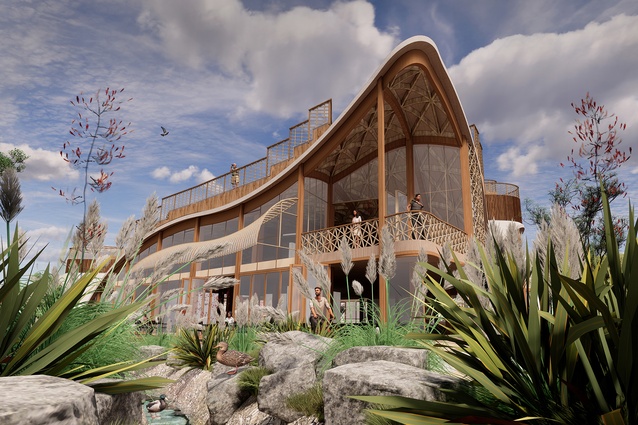Living cities critical in helping to combat climate change
Planted green walls and rooftops, tree-lined roadsides, urban ngahere (forests) and wetlands not only beautify our cities but they are also critical elements in our efforts to mitigate and adapt to the effects of climate change.
Associate Professor at AUT’s School of Future Environments, Dr Maibritt Pedersen Zari, is calling on built environment professionals, scientists and policymakers to urgently implement urban ecological regeneration strategies in cities across the globe.
In a paper published in Nature Climate Change this week, Pedersen Zari says that as urban environments continue to expand, so, too, does their contribution to biodiversity loss and greenhouse gas emissions.
“Cities tend to be hotter than surrounding areas because they are made of high mass materials and tend to have reduced vegetation and pervious surfaces. This is called the ‘urban heat island effect’, a phenomenon that will be exacerbated by climate change,” says Pedersen Zari. “Obviously this will have huge negative impacts on people, as well as non-human life that live in these places.”
Pedersen Zari says regenerative living city strategies can mitigate and potentially even start to reverse some of these effects.
Implementing regenerative living city strategies based on increasing urban vegetation can support biodiversity, help cool and purify air, prevent or lessen flooding, and sequester carbon from the atmosphere.
Also, cities with strategically located green space, street trees, urban wetlands and building-integrated vegetation (such as green walls and roofs) provide places for people to relax, socialise and exercise, which can help reduce stress and improve well-being.
Energy savings attributed to green roofs were found to be up to 85 per cent for cooling and almost 50 per cent for heating in one study, while another study found the installation of a green wall decreased external wall temperature by 11 degrees, therefore reducing emissions created by artificially cooling the building, and combating the urban heat island effect.
However, despite the well-documented interconnectedness of climate change, biodiversity loss and human well-being, Pedersen Zari says few cities have implemented these types of strategies at scale.

“Singapore is an exception to this rule and an example of how resilient, healthy urban environments that contribute to thriving ecosystems can be developed when collective imagination and sound policy combine.”
“Between 1986 and 2010, the widespread use of green walls and roofs, garden terraces and sky parks increased green coverage from 35 to 50 per cent, despite ongoing densification and population growth,” she points out.
“This was encouraged through policy and initiatives like the Landscaping for Urban Spaces and High-Rises Programme, which encourages and incentivises building owners and developers to incorporate greenery into their projects.”
Creating these green spaces would be one strategy among the many that are needed to address climate change but it is one that carries important ecological and wellbeing co-benefits, Pedersen Zari says.
“Cities must more comprehensively understand and respond to local climate, ecologies, peoples and their knowledges. Built environment professionals, scientists and policymakers can and should effectively utilise the urban climate–biodiversity–well-being nexus of relationships to enhance the resilience of cities and communities and increase the health of ecosystems and the climate they exist within and are dependent upon.”
‘Regenerative living cities and the urban climate–biodiversity–wellbeing nexus’ was published in Nature Climate Change on 27 June 2022. Associate Professor Pedersen Zari’s co-authors were Maggie MacKinnon, Kamiya Varshney and Nilesh Bakshi of Wellington School of Architecture, Te Herenga Waka Victoria University of Wellington.
Associate Professor Dr Pedersen Zari is Primary Research Investigator and Project Coordinator of the NUWAO (Nature-based Urban design for Wellbeing and Adaptation in Oceania) project, which is funded by a Marsden grant from the Royal Society of New Zealand. Additional support for this research was provided by the Restoring Urban Nature Project funded by an Aotearoa New Zealand Ministry of Business, Innovation and Employment Endeavour grant.












